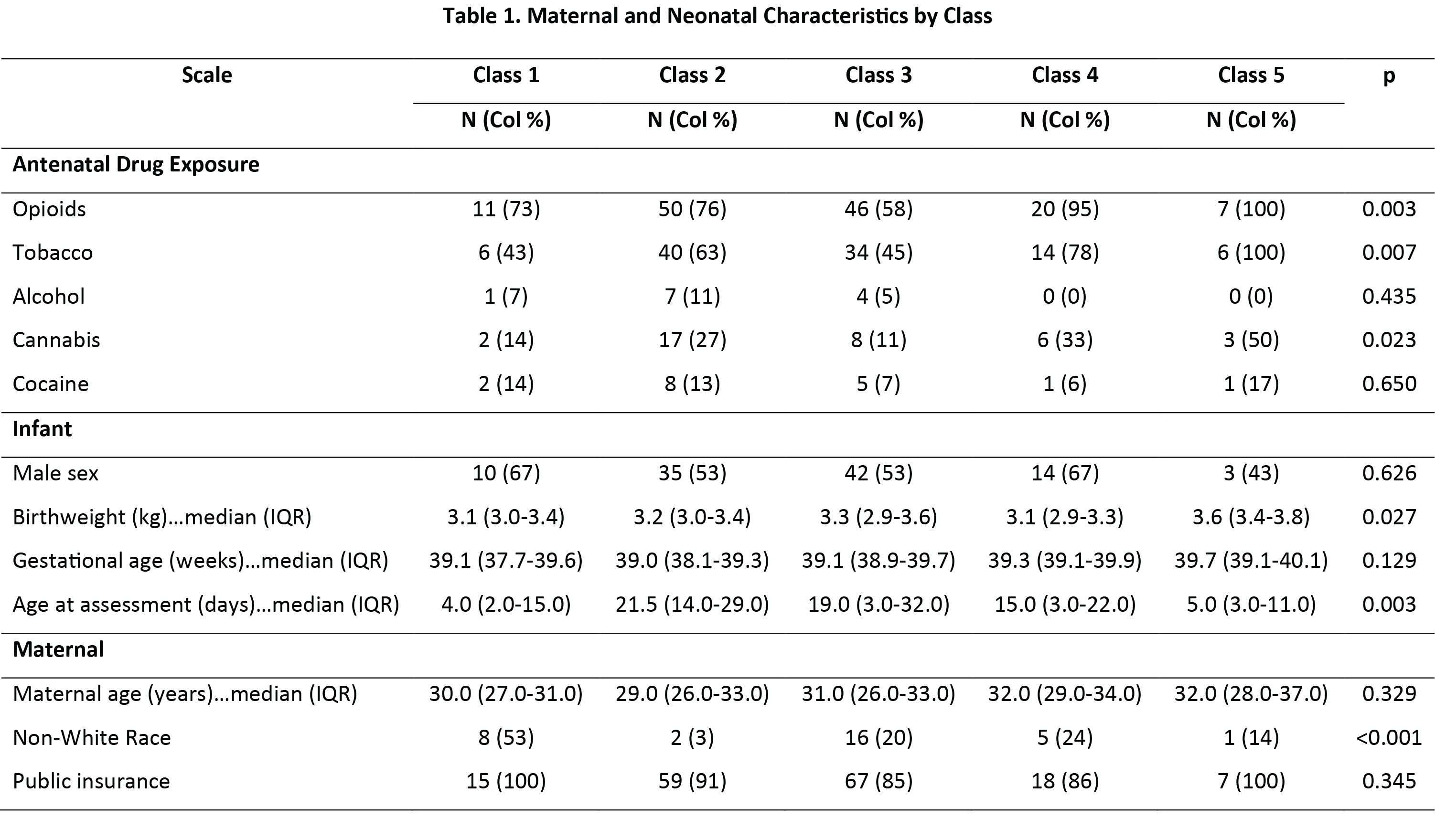Neonatal General
Neonatal General 9: NOWS and Other Exposures
202 - Latent Profile Analysis of NNNS-II Scores among Neonates with Antenatal Opioid Exposure and Controls
Publication Number: 202.333

Carla Bann, PhD (she/her/hers)
Senior Fellow of Statistics and Psychometrics
RTI International
Apex, North Carolina, United States
Presenting Author(s)
Background:
Neonates with antenatal opioid exposure are at increased risk for adverse neurobehavioral outcomes. The NeoNatal Neurobehavioral Scale (NNNS-II) is a validated measure of infant development, capturing a range of neurological, motor, stress, and behavior challenges common among infants with antenatal drug exposure. Given current rates of neonatal opioid withdrawal syndrome, further research is needed to identify vulnerable subgroups of infants, particularly during the initial withdrawal period and first month of life.
Objective:
To identify distinct subgroups of neonates based on their patterns of scores on the NNNS-II and examine potential factors related to subgroup membership This study identified unique patterns of neurobehavior that varied by drug exposure status. Future research is needed to examine the relationship between these early patterns of neurobehavior and longer-term outcomes.
Design/Methods: Analyses included 188 neonates (134 opioid exposed and 54 unexposed) enrolled in the ACT NOW Outcomes of Babies with Opioid Exposure (OBOE) study. Certified NNNS-II examiners assessed infants at 0-1 months of age. Latent profile analyses were conducted of NNNS-II scale scores. Model fit indices, likelihood ratio tests, and saliency of classes informed determination of the most appropriate solution. Analyses of variance and chi-square tests were conducted to compare classes based on antenatal drug exposure and maternal and neonatal characteristics.
Results: After reviewing multiple criteria, a 5-class solution was selected: Class 1 (8%), Class 2 (35%), Class 3 (42%), Class 4 (11%) and Class 5 (4%). The greatest variation in classes was for handling, arousal, and quality of movement (Figure 1). Class 1 had the most optimal scores across all subscales except quality of movement and non-optimal reflexes. Class 3 had similar scores to Class 1 but performed better on quality of movement. Class 5 was the poorest performing on all subscales. Classes 2 and 4 are similar; however, Class 2 had higher handing and lower stress scores. All infants in class 5 were exposed to opioids and tobacco antenatally and 50% were exposed to cannabis (Table 1). Antenatal drug exposure was also high in Class 4: opioids (95%), tobacco (78%), and cannabis (33%). Control infants (unexposed to opioids) were most likely to be in Class 3 (42%). Class membership varied significantly by age at assessment (p=0.003), birthweight (p=0.027), and race (p< 0.001). Age at assessment was lowest for infants in Classes 1 and 5 who also exhibited the lowest scores for quality of movement.
Conclusion(s): 
.jpg)
